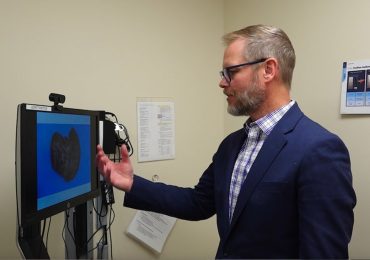The umbilical cord — the lifeline between mother and baby — was historically discarded as medical waste after birth.
Today, an increasing number of parents are choosing to preserve the cord blood for its potential to safeguard their child’s future health.
The birth of a baby comes with an overwhelming number of decisions, one of which is whether to bank the newborn’s cord blood cells.
MEET THE AMERICAN WHO HELPED SAVE MILLIONS OF NEWBORN BABIES, DR. VIRGINIA APGAR, PHYSICIAN AND MUSICIAN
Whether cord blood banking is worth it for a family hinges on various factors, including the present health of their child, the existence of twins in the family and many other individual considerations.
What is cord blood banking?
Cord blood banking involves the collection and storage of stem cells derived from the blood of a newborn’s umbilical cord immediately after birth.
The reason is its potential life-saving abilities, as the hematopoietic stem cells found in cord blood have the unique ability to differentiate into various types of blood cells.

There are two main types of banks for cord blood: public and private. (BSIP/UIG)
Preserving the cord blood cells provides an option for future therapeutic use in treating a range of diseases for the child or siblings.
These stem cells are less likely to face rejection during transplant due to their immature nature. This widens the blood cells’ applicability in medical procedures for the donor or family members.
Cord blood banking process
Cord blood banking can be done from either a vaginal or surgical birth, and regardless of whether the labor was induced or occurred naturally.
Once the parents decide to store the blood, the doctor will clamp the umbilical cord in two places and cut the cord, separating the mother from the child.
Once the blood has been collected and sealed, it will be sent to a cord blood bank for storage.
The doctor will inject a needle into the cord and collect, in general, between 60 and 300 milliliters (mL) of cord blood. The collected volume can vary, however, and not all collections will be sufficient for future therapeutic use for the child or siblings.
Once the blood has been collected and sealed, it will be sent to a cord blood bank for storage.

In the United States, the Food and Drug Administration (FDA) regulates cord blood banking and donation. (Education Images/Universal Images Group )
Collecting fluid in this process is relatively easy and does not cause pain to the mother or baby, according to webmd.com.
The collection process generally takes around five minutes to complete.
The blood can be stored at several different sites, based on the family’s decisions and circumstances.
- Public cord banks. These are free to use, but donations made are available to anyone.
- Private cord banks. These blood banks will store the blood for use only by the donor and family members of the donor. This can be an expensive option as there is a processing fee and an annual storage fee.
- Direct-donation banks. These are a mixture of public and private banks. They store cord blood for public use but also accept donations to reserve the stem cells for the child.

Cord blood is collected immediately after birth in a painless process that does not harm the mother or the baby. (BSIP/Universal Images Group)
When discussing the options, cord blood banking often refers to private banking, while cord blood donation generally refers to public banking.
Private cord banking may not be worth the financial expense for the family, according to the American College of Obstetricians and Gynecologists and the American Academy of Pediatrics. The reason is that the price is steep for the chance that the child will need to use the blood at some point in time.
PARENTS WELCOME 14-POUND BABY, THE LARGEST ON RECORD SINCE 2010: ‘EVERYBODY WAS MAKING BETS’
These organizations suggest that routine storage of cord blood for stem cells as a sort of insurance is unproven, and therefore they caution parents when considering it.
Donating to a public storage bank could benefit the community, however, according to these organizations.

There is usually no cost to donate cord blood to a public bank, but private banking can be pricey, involving initial collection fees and annual storage fees. (BSIP/UIG)
What are the uses of cord blood banking?
Cord blood banking can be beneficial because the stem cells are hematopoietic stem cells, meaning they are immature but can become mature cells of different types within the body.
Not only do they require less matching, they also cause fewer infections.
BABY SLEEP DANGERS REVEALED IN NEW STUDY AS NEARLY 70% OF INFANT DEATHS WERE DUE TO CO-SLEEPING
The stem cells within the umbilical cord can provide life-saving assistance for several conditions later in life.
Stem cells from the umbilical cord can treat a variety of conditions, including:
- Cancer
- Anemia
- Immune system disorders

Once the cord blood is collected and stored, it can remain viable for a long time. Research suggests that cord blood can be stored for at least 10 years but often much longer. (QAI Publishing/Universal Images Group )
A benefit of using cord blood stem cells is that they rarely result in infectious diseases.
They are also highly effective as they are half as likely to be rejected compared to other stem cells because they are immunogenic due to their immature nature.
What are the cons of cord blood banking?
There is only about an 8% usage rate of blood that has been stored through this process, according to a study cited by the National Library of Medicine.
Part of the reason for the low rate is that the blood is not always useful for a disease that develops later on in life.
HEALTH BENEFITS OF CONSUMING VINEGAR, PLUS TIPS FROM A DIETITIAN
Many factors go into whether cord blood can be used, such as from a set of twins when one twin is healthy and the other is born with a genetic disorder.
The blood drawn from the ill child can not be used later on for the healthy child, but the reverse could be true if the blood is a good match.

Patients are more likely to find a genetic match among donors of their own ethnic background. (BSIP/Universal Images Group)
There are many circumstances that the American Academy of Pediatrics lays out as not ideal conditions for cord blood banking.
Identical twins are not often the best match for each other because a slight genetic difference in the blood cells is recommended.
CLICK HERE TO GET THE FOX NEWS APP
Additionally, public blood banks can only accept donations from umbilical cords from a mother carrying a single child. This is due to the possibility that the blood units could get mixed up during the collection with twins.
Another downside of using cord blood cells is that it takes longer for them to create the therapeutic effect desired because they are hematopoietic stem cells.
How much does cord blood banking cost?
Typically, there are two separate fees involved when preserving a child’s cord blood cells, according to the American Pregnancy Association. The initial fee covers the enrollment and collection.
Then, there is an annual storage fee.
CLICK HERE TO SIGN UP FOR OUR HEALTH NEWSLETTER
Those who go this route can expect to pay in the range of $1,350 and $2,350 for the initial collection, testing and registering, according to the American Academy of Pediatrics. Annual storage fees often range from $100 to $175, but the costs of individual storage banks will vary.

Currently, research into cord blood stem cells is ongoing. Scientists are investigating the potential for treating conditions such as cerebral palsy and Type 1 diabetes. (iStock)
If the parents donate the blood cells from the umbilical cord, there is no cost.
The future of cord blood banking
The future trajectory of cord blood banking remains uncertain. Nonetheless, preserving cord blood cells today may have significant health benefits, offering new avenues for disease treatment as the field advances.
For more Health articles, visit www.foxnews/health
Considering the first successful umbilical cord blood stem cell transplant was performed as recently as 1988, as documented by the National Library of Medicine, the science around this practice is relatively young.
With ongoing research, the scope and efficacy of cord blood use are bound to expand.









